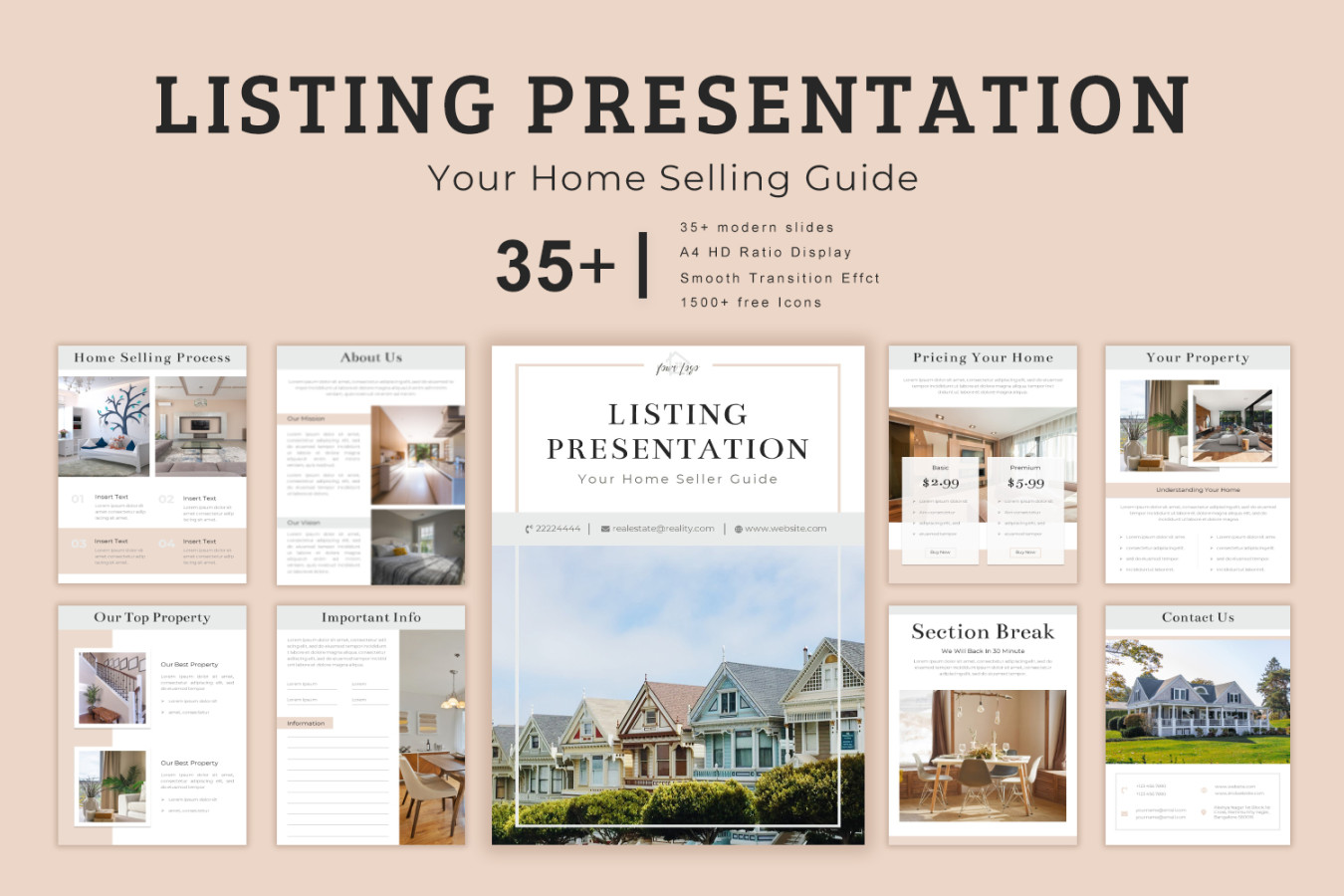A well-designed Real Estate Listing Presentation Template is more than just a collection of slides; it’s a powerful tool that can help you win listings and showcase your expertise as a real estate agent. By incorporating the right design elements and content, you can create a presentation that leaves a lasting impression on potential clients.
Key Components of a Professional Real Estate Listing Presentation Template

1. Cover Slide: The cover slide sets the tone for your presentation. It should include your name, contact information, and a visually appealing image that reflects your brand. Consider using a high-quality photo of a property or a cityscape.
2. About You: This section should highlight your qualifications, experience, and achievements in the real estate industry. Use concise bullet points to summarize your key points and include testimonials or awards if applicable.
3. Your Market Expertise: Demonstrate your knowledge of the local real estate market by discussing current trends, recent sales, and upcoming developments. Use data and statistics to support your claims and show that you are well-versed in the area.
4. Your Marketing Plan: Outline your comprehensive marketing strategy for selling the property. This should include details on how you will reach potential buyers through online listings, social media, open houses, and other channels.
5. Comparative Market Analysis (CMA): Provide a detailed CMA that compares the property to similar listings in the area. This will help potential sellers understand the property’s value and pricing strategy.
6. Proposed Listing Price: Clearly state your recommended listing price based on the CMA and market conditions. Explain the factors that influenced your decision and how you arrived at the proposed price.
7. Selling Process Overview: Walk potential sellers through the selling process, from preparing the property for sale to closing the deal. Provide a timeline and address any concerns they may have.
8. Your Team: If you have a team of professionals working with you, introduce them and their areas of expertise. This will show potential sellers that they have a dedicated and experienced team supporting them.
9. Testimonials: Include testimonials from satisfied clients who can vouch for your services. This can help build trust and credibility with potential sellers.
10. Call to Action: End your presentation with a strong call to action, encouraging potential sellers to list their property with you. Offer a free consultation or other incentive to entice them to take the next step.
Design Elements for a Professional Presentation
Consistent Branding: Use consistent branding elements throughout your presentation, such as your logo, colors, and fonts. This will help create a cohesive and professional look.
By following these guidelines, you can create a professional and compelling Real Estate Listing Presentation Template that will help you stand out from the competition and attract more listings.